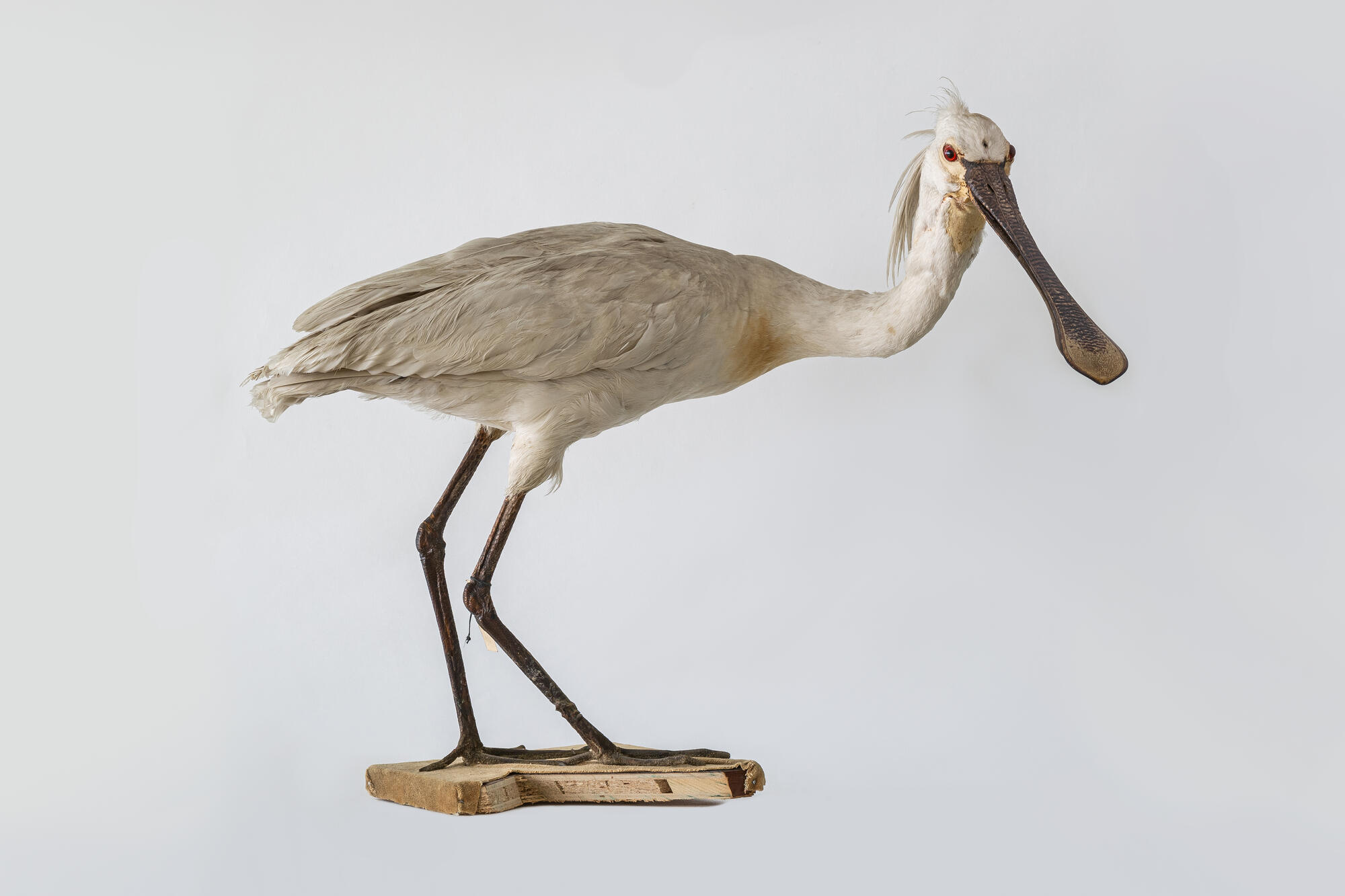The spoonbill is a large wading bird in the ibis family, which also includes the glossy ibis and several species of ibis. It lives mainly in tropical and subtropical areas, but can also be found in temperate European climates. During the cold season, the spoonbills fly to warmer countries, most often to Africa or the Mediterranean. In-flight, they look a lot like storks because they also extend their neck forward.
In Russia, the spoonbills live mainly in the south — in the lower reaches of the Don, Kuban, and Volga. They can also be found in other regions, such as Transbaikalia, Tuva, Khakassia, and Krasnoyarsk Krai. The plumage coloration of these birds is white; their legs and broad flat beaks are black. During the mating season, they have a peculiar crest on the back of the head and an ochre-yellow spot on the neck. As an adult, it reaches one meter in length and its wingspan can range from 115 to 135 centimeters.
Spoonbills usually settle near small bodies of water — near the rivers that have a muddy bottom and flow slowly, near maritime or fluvial estuaries. The birds live in small flocks, sometimes joining other water birds, such as glossy ibises or herons.
Spoonbills nest in reed beds, on trees or bushes close enough to the water. They usually lay three to six white eggs that have brown speckles and are strongly tapered to one end.
In the first few weeks of their life, spoonbill chicks have a thick, soft beak that allows them to take food from their parents' mouths without hurting them. Gradually the tissues of the beak become harder, it becomes flatter and expands towards the end. The chicks spend 28 days in the nest, and then joins the chicks from other nests. When the birds are about a month and a half, they begin to fly.
In Krasnodar Krai, the spoonbill is most often found near the floodplains and estuaries. The birds feed on insect larvae, ringed worms, crustaceans, fish fry, frogs, and in some cases aquatic plants.
Now ornithologists have discovered more than ten nesting colonies of spoonbills in Kuban. The largest of them are located in the Primorsko-Akhtarsky and Kalininsky districts.
In Russia, the spoonbills live mainly in the south — in the lower reaches of the Don, Kuban, and Volga. They can also be found in other regions, such as Transbaikalia, Tuva, Khakassia, and Krasnoyarsk Krai. The plumage coloration of these birds is white; their legs and broad flat beaks are black. During the mating season, they have a peculiar crest on the back of the head and an ochre-yellow spot on the neck. As an adult, it reaches one meter in length and its wingspan can range from 115 to 135 centimeters.
Spoonbills usually settle near small bodies of water — near the rivers that have a muddy bottom and flow slowly, near maritime or fluvial estuaries. The birds live in small flocks, sometimes joining other water birds, such as glossy ibises or herons.
Spoonbills nest in reed beds, on trees or bushes close enough to the water. They usually lay three to six white eggs that have brown speckles and are strongly tapered to one end.
In the first few weeks of their life, spoonbill chicks have a thick, soft beak that allows them to take food from their parents' mouths without hurting them. Gradually the tissues of the beak become harder, it becomes flatter and expands towards the end. The chicks spend 28 days in the nest, and then joins the chicks from other nests. When the birds are about a month and a half, they begin to fly.
In Krasnodar Krai, the spoonbill is most often found near the floodplains and estuaries. The birds feed on insect larvae, ringed worms, crustaceans, fish fry, frogs, and in some cases aquatic plants.
Now ornithologists have discovered more than ten nesting colonies of spoonbills in Kuban. The largest of them are located in the Primorsko-Akhtarsky and Kalininsky districts.



